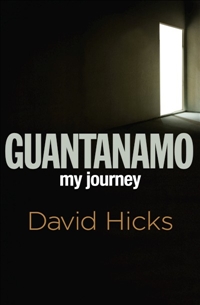 There has been some controversy of late about the fate of the literary magazine, Meanjin. The fear is, that with the leaving of the editor, Sophie Cunningham, the publishers (MUP) will have the excuse to get rid of the print version and put the magazine online. There was much hue and cry about this, most notably by Peter Craven writing in The Age. He says Meanjin will “shrivel in the online desert” and “disappear into the evanescence of the internet”. The print version is necessary, he says, so “a kid might pick [it] up in a library or a punter might see [it] in a book shop”.
There has been some controversy of late about the fate of the literary magazine, Meanjin. The fear is, that with the leaving of the editor, Sophie Cunningham, the publishers (MUP) will have the excuse to get rid of the print version and put the magazine online. There was much hue and cry about this, most notably by Peter Craven writing in The Age. He says Meanjin will “shrivel in the online desert” and “disappear into the evanescence of the internet”. The print version is necessary, he says, so “a kid might pick [it] up in a library or a punter might see [it] in a book shop”.
I, too, have a fondness for print. I was disappointed to hear the The Sleeper’s Almanac will only be available digitally from next year. But is this nostalgia? Certainly, for a writer, to be published means first and foremost to be published in print. But can we, and should we, be trying to turn back the tide? If Meanjin, and other serious literary magazines, are supposed to be cutting-edge shouldn’t they acknowledge new forms of reading?
Let’s look at Australia’s literary magazines. There are perhaps ten or twelve well-known and well-established ones: Meanjin, Southerly, Westerly, Overland, Island, Heat, Griffith Review, Quadrant, Voiceworks, Wet Ink, Going Down Swinging and probably as many small, not so well known ones: Cut Water from Sydney, Harvest and Kill Your Darlings from Melbourne, for example.
Let’s now look at Peter Craven’s punter. At $20 to $25 a pop, your average punter might subscribe-to/buy regularly one of these magazines. It’s beyond the punter’s budget to support all of them. Okay, our punter can go to his/her local library, but if it’s like my local library, they will only hold one of the above. This means, really, that most punters won’t read much of the new writing available in Australia. And that’s the tiny, tiny minority of people who EVER buy a literary magazine. Look in your local newsagent, are they there? Rarely. Look in your local bookshop. Do they stock them? Again, rarely.
So now we get back to the digital possibilities. I have an iPad. I would either buy an online literary magazine as an app or iBook (at say half the print price) or I would also love to be able to purchase an essay I was interested in, or a short story, for a token amount, say $2 a go. These pieces are just the length to read on the train, or over coffee and toast in the morning. But, of course, such availability is not here yet in Australia (we are way behind the US).
I currently subscribe to Kill Your Darlings email feed from their blog and regularly get something interesting to read on email – just the right thing for my iPad. They must think such pieces whet the recipient’s appetite to buy the print version but I’m reading these articles online and would be happy to pay a certain amount to do so in a properly formated way with graphics etc. There are also online only magazines currently out there: Perilous Adventures, Cordite, Mascara, Jacket, Stylus. These are all currently free and that’s the problem, or the opportunity.
The way we read, and the way we value what we read, is changing. Those of us with ebook readers know that when we’ve purchased that copy of a new novel we want to read, the novel is just as weighty, important, absorbing, valuable (or not) as any print book we own. I will admit that I miss beautiful colour covers but with the iPad, you get a virtual wooden bookcase where the colour covers of your books reside, the way you have cover flow on your iPod.
Paper will give way to digital, eventually. Those publishers/journals that move over now, in the beginning, will be the venerable online journals of the future that have staked out their readership. Hand held devices like the Kindle and the iPad will be continually adapted to make them extremely usable for the “punters”. BTW Peter Craven, your kid stumbling across a Meanjin in a library. Yes, he/she will stumble across it, but it will be online. Libraries will still be the free gateway, but they’ll be the gateway to what’s online, just as they will increasingly make ebooks available for loan.




